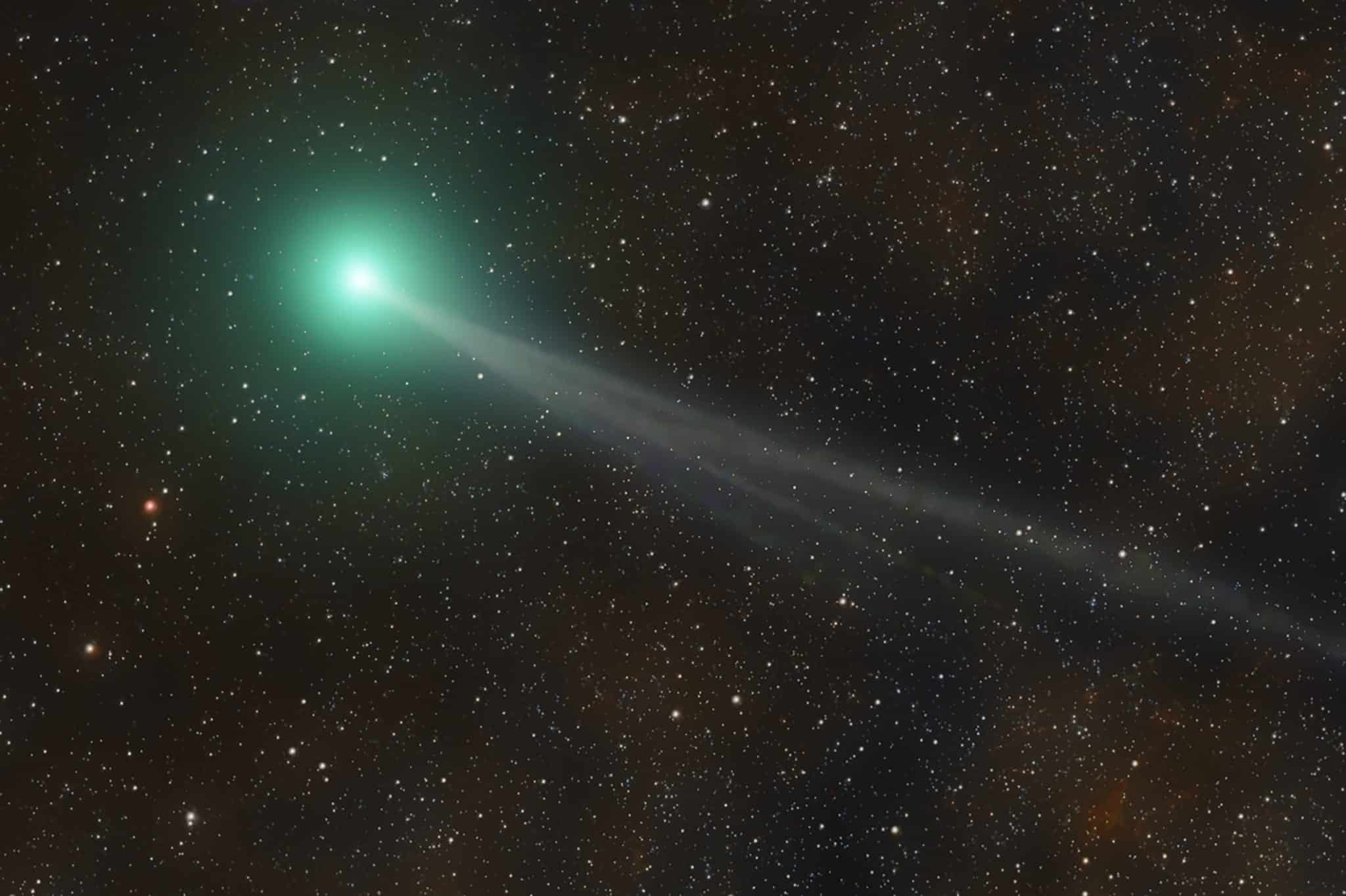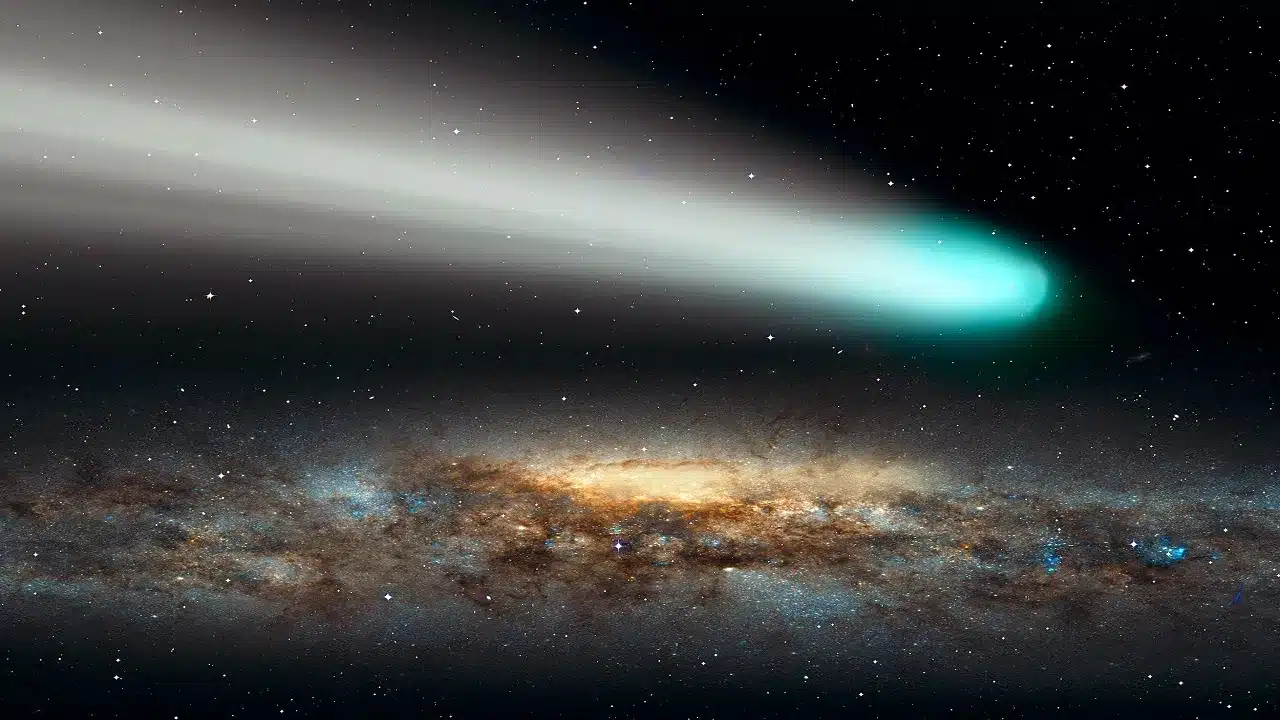This weekend, celestial enthusiasts and stargazers in Thailand are in for a once-in-a-lifetime treat as they gaze upwards into the night sky. The National Astronomical Research Institute of Thailand (Narit) has revealed an extraordinary celestial event—a rare sighting of the newly discovered Nishimura comet, also known as C/2023 P1. Named after its discoverer, Hideo Nishimura, a Japanese amateur astronomer, this comet has embarked on a remarkable 437-year journey around Earth. As it approaches our planet, it promises to put on a spectacular show for skywatchers. In this article, we will delve into the fascinating details of the Nishimura comet, the science behind its appearance, and how people in Thailand can witness this celestial marvel.
The Nishimura Comet: A Cosmic Wanderer
Comets have long captivated humanity with their ethereal beauty and enigmatic origins. The Nishimura comet, officially designated as C/2023 P1, is no exception. Discovered by the amateur astronomer Hideo Nishimura, this celestial traveler has a remarkable history.
The Nishimura comet’s journey is unlike anything witnessed in our lifetimes. It takes a staggering 437 years to complete a single orbit around the Sun. Comets are essentially icy bodies comprised of dust and volatile gases, and they often originate from the distant reaches of our solar system, the Oort Cloud or the Kuiper Belt. When a comet like Nishimura ventures close to the Sun, it undergoes a transformation. The heat from the Sun causes the volatile ices in the comet to sublimate, creating a glowing coma and a magnificent tail that stretches across the night sky.

Taken in Nerja, Málaga. Andalusia. South of Spain.
A Celestial Approach
Narit, the National Astronomical Research Institute of Thailand, serves as a beacon for celestial enthusiasts in the region. They’ve provided crucial information about the Nishimura comet’s trajectory and its upcoming celestial performance.
One of the challenges in observing the Nishimura comet is its unique approach angle towards Earth and the Sun. Initially, locating it may be a bit tricky. However, as the weekend approaches, the comet’s visibility is expected to improve significantly. After Friday, the Nishimura comet will become visible in the western sky shortly after sunset. The real showstopper, though, is slated for Sunday, when the comet will come closest to the Sun, approaching within 34 million kilometers of our solar powerhouse.
The Comet Observation database, a valuable resource for astronomers, has indicated that the Nishimura comet will shine at a magnitude of 3. This level of brightness will allow the comet to be visible to the naked eye, making it accessible to amateur skywatchers and experienced astronomers alike.
A Heavenly Treasure Hunt in the Skies of Thailand
Narit has thoughtfully provided guidance on how to spot the Nishimura comet, turning this celestial event into a treasure hunt in the night sky. They suggest that, on Sunday evening, observers in Thailand should search for the Virgo constellation. This celestial guidepost will provide an estimated one-hour window to catch a glimpse of the Nishimura comet before it gradually fades from view.
As the comet continues its journey away from the Sun, its visibility will inevitably diminish. This fleeting opportunity to witness the comet’s splendor makes it all the more special. Narit also advises observers to look for the comet’s distinctive features: a long tail and a greenish hue. These characteristics are hallmarks of the Nishimura comet and are sure to leave a lasting impression on those who are fortunate enough to spot it.
The Remarkable Discovery by Hideo Nishimura
The story behind the discovery of the Nishimura comet adds an element of human fascination to this cosmic event. Hideo Nishimura, an amateur astronomer with a passion for exploring the night sky, made his remarkable find on the morning of August 11. Armed with nothing more than a digital camera and an insatiable curiosity, Nishimura captured long-exposure photographs of the sky.
It was during this photographic endeavor that he stumbled upon the comet. His observation, made from a humble, earthly vantage point, was confirmed by the Minor Planet Centre on August 15. This validation marked a significant moment in Nishimura’s amateur astronomy career. Notably, this isn’t his first comet discovery; he has previously identified Comet Nakamura-Nishimura-Machholz (C/1994 N1) and Comet Nishimura (C/2021 O1).
Hideo Nishimura’s story is a testament to the power of amateur astronomers and the contributions they make to our understanding of the cosmos. It underscores the idea that anyone with a passion for the stars and the determination to explore the heavens can make profound discoveries that enrich our knowledge of the universe.
Astronomical Rarity: The Green Comet of 2022
The Nishimura comet is not the only green-hued celestial visitor to grace our night skies in recent times. At the beginning of February in a previous year, another green comet briefly dazzled observers around the world, marking an event of astronomical rarity.
This comet, named C/2022 E3 (ZTF), was first discovered by astronomers in March 2022 at the Palomar Observatory in San Diego County, California. What made this comet even more remarkable was that it was the first green comet to be visible in the night sky for the first time in 50,000 years. Its emerald hue was a visual spectacle that captured the imagination of skywatchers and astronomers alike, reminding us of the breathtaking wonders that our universe has to offer.
In the vast canvas of the cosmos, celestial events like the appearance of the Nishimura comet serve as reminders of the beauty and wonder that surround us. This weekend, as Thailand looks skyward, the Nishimura comet promises to be a dazzling addition to the celestial tapestry. It invites us to marvel at the intricacies of our universe and the incredible journeys taken by objects like comets.
As you prepare to witness this extraordinary event, remember that the Nishimura comet’s appearance is not just a spectacle; it’s a testament to the enduring spirit of human curiosity and exploration. Whether you’re an amateur astronomer or someone who simply gazes at the stars in wonder, this celestial show is a reminder that the universe is full of surprises, waiting to be discovered by those who dare to look up and dream. So, keep your eyes pointed upwards this weekend, and may the Nishimura comet inspire you to reach for the stars, both figuratively and literally, as you embark on this cosmic journey.











